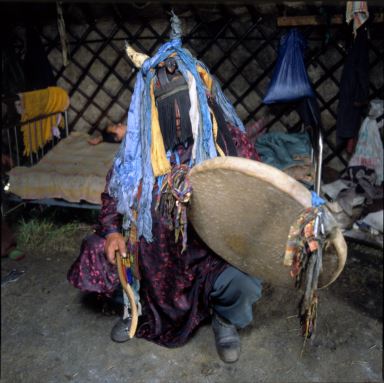Traditional shamanistic ceremonies are based on the shaman inducing a trance state on himself or herself to look at situations presented to him or her beyond normal consciousness.

Most “primitive” societies rely on some kind of shamanistic ceremonies to resolve issues and problems. Depending on cultures and locally available drugs, the shamanistic trance can sometimes be induced by drugs, but is most often the result of a capability that has been trained by another shaman.
Shamans in those cultures are usually quite rare; in Mongolia (before shamanic ceremonies became touristic), Corine Sombrun estimates there were about a ratio of 1 per 100,000 inhabitants.
Trance induction using for example a drum or some other instrument that creates a trance-inducing sound appear to be somewhat ineffective and are only active on the shaman and a limited number of particularly sensitive individuals. Experiments carried out by Corinne on the basis of shaman drum ceremony recordings have failed to induce trance in the listeners.
The challenge that Corine Sombrun grappled with was how to find a more effective way to induce trance, and she has progressively, through trial and error, found specific rhythms and sounds that tend to create trance in a majority of people. Those are the sound loops I have been subjected to during my training.
In a series of post I will describe a personal journey into an altered state of consciousness – cognitive trance – that I was privileged to undertake this year. Previous posts in this series:
- A Journey Into Altered States of Consciousness: Introduction
- How Trance Is a Common Altered State of Consciousness
- How Trance Is Common Around Us But We Don’t Realize It
- How Trance Is Associated with Pain Decrease and Strength Increase
- How ‘Flow’ May Assimilated to a Trance State
- How I Was Taught to Self-Induce Trance At Will After Only a Few Hours
- How My Teacher Corine Sombrun Discovered Trance Practice
